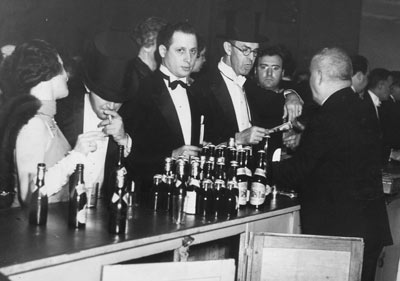
Beginning in 1920, the eighteenth amendment made it illegal to manufacture, sell, and transport alcohol in America. This was the time of prohibition. Prohibition was widely supported by temperance organizations throughout the country. “The Temperance movement blamed alcohol for many of society's ills, especially crime and murder.” (1) Progressives and other groups of people also favored prohibition. They believed that society in general would become improve without the influence of alcohol and liquor. However, many Americans opposed the prohibition movement. For one, doctors and physicians regularly prescribed alcohol and liquor for medicinal purposes. (2) People also stated that alcohol was useful for therapeutic purposes. During the time of prohibition, organized crime increased significantly. Due to the growing demand for alcohol, crime organizations such as the mafia and bootleggers took the opportunity to supply the growing cities and its people with alcohol. “By the late 1920's more than 1 million gallons of bootleg liquor had been illegally brought into the United States.” (3) Crime organizations grew significantly during this time period. With the growing amount of crime, polices agencies began having trouble monitoring and stopping the illegal flow of alcohol. Throughout the decade, prohibition became increasingly unpopular, especially after the stock market crash in 1929, when the people and the government were in desperate need for jobs and money. “On December 5, 1933, the 21st Amendment to the U.S. Constitution was ratified. The 21st Amendment repealed the 18th Amendment, making alcohol once again legal.” (4)
1. http://history1900s.about.com/od/1920s/p/prohibition.htm
2. http://www.smithsonianmag.com/history-archaeology/Just_What_the_Doctor_Ordered.html
3. http://www.albany.edu/~wm731882/organized_crime1_final.html
4. http://history1900s.about.com/od/1920s/p/prohibition.htm
